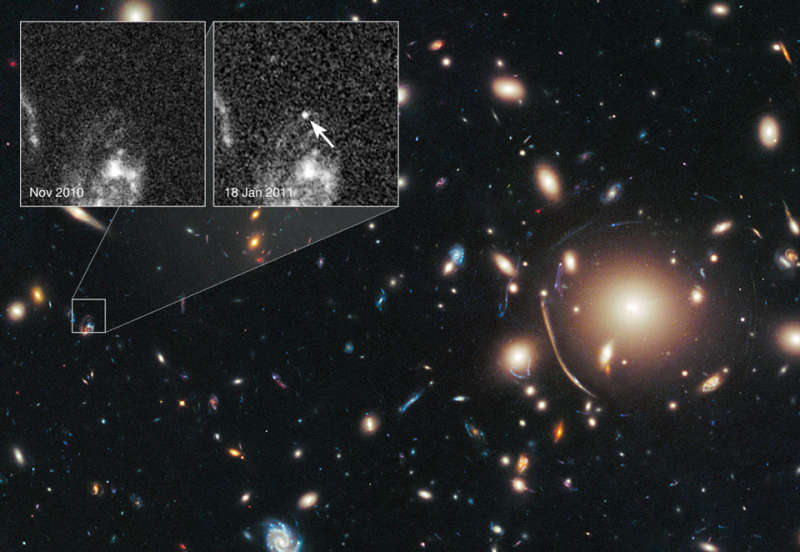Galaxy Cluster Magnifies Distant Supernova

Explanation:
How do you calibrate a huge gravitational lens?
In this case the lens is the galaxy cluster
Abell 383,
a massive conglomeration of galaxies, hot gas, and
dark matter that lies about
2.5 billion light years away
(
redshift z=0.187).
What needs calibrating is the mass of the cluster,
in particular the amount and distribution of dark matter.
A
new calibration technique has been tested recently that consists of waiting
for supernovas of a very
specific type to occur behind a galaxy cluster, and then figuring out how much
the cluster must have magnified these supernovas through gravitational lensing.
This technique compl
ements
other measures including computing the
dark matter needed to contain
internal galaxy motions, to confine
cluster hot gas, and to create the
gravitational lens image distortions.
Pictured above from
the
Hubble Space
Telescope,
galaxy cluster A383 shows its
gravitational lens capabilities on the right by highly distorting background
galaxies behind the cluster center.
On the left is a distant galaxy shown both before and after a recent revealing supernova.
To date, calibration-quality supernovas of
Type Ia have been found behind
two
other
galaxy clusters by the Cluster Lensing And Supernova survey with Hubble
(
CLASH) project.
Follow APOD on:
Facebook,
Google Plus,
or
Twitter
Authors & editors:
Robert Nemiroff
(MTU) &
Jerry Bonnell
(USRA)
NASA Web Site Statements, Warnings,
and Disclaimers
NASA Official: Jay Norris.
Specific
rights apply.
A service of:
LHEA at
NASA /
GSFC
& Michigan Tech. U.

